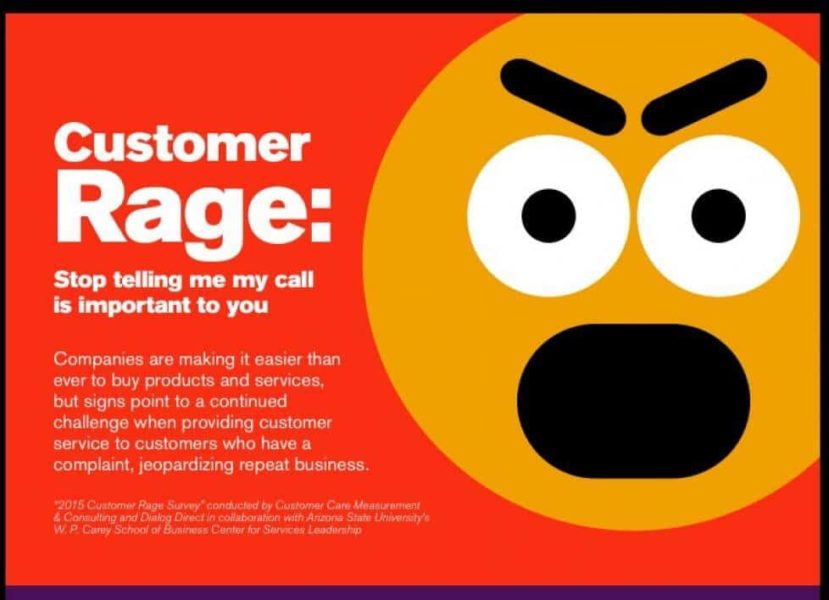Your cable cuts out in the fourth quarter of the football game. You can’t access the voice mails on your cell phone. The “check engine” light goes on in your car a week after you had it in for service.
Are you angry yet? If so, you’re not alone.
More customers are reporting problems with goods or services and two-thirds of them have escalated to feeling “consumer rage,” according to a new study released by Arizona State University.
The 2015 Consumer Rage Survey results illustrate not only the increasing level of consumer discontent, but also the specific services that incur their wrath — and the customer-service phrases that enrage them (“Your call is important to us …”).
“The loss of time and the aggravation have been steadily coming to the fore in terms of what’s difficult for people,” said Mary Jo BitnerMary Jo Bitner hold the Edward M. Carson Chair in Service Marketing and also is a professor of marketing., executive director of the W. P. Carey School of Business Center for Services LeadershipThe Center for Services Leadership is a research center in the W. P. Carey School of Business that combines scientific research with business best practices., which released the study.
“For companies, I don’t know why they don’t get that.”
The survey was conducted by Customer Care Measurement and Consulting and Dialog DirectCCMC is a Virginia-based company that performs customer-satisfaction surveys and Dialog Direct is a Michigan-based marketing and call center provider. in collaboration with the Center for Services Leadership. It’s the seventhThe survey was conducted in August 2015 via telephone calls to a representative sample of 1,000 respondents. one since the White House started doing the survey in 1976.
The results show that even though businesses spend billions of dollars dealing with problems, such as establishing 800 numbers for customer concerns, they still aren’t getting it right.
That rage is costing businesses. The survey extrapolated the results and estimated that more than $2 billion of revenue is at risk when companies lose business because of dissatisfaction.
Among the survey’s top findings:
• Cable and satellite TV is the service that had the most problems among respondents – at 23 percent, up from 17 percent in the 2013 survey. That was followed by telephone service, both land line and cell, at 18 percent; automobiles, 11 percent; computer service (such as Internet providers), 6 percent; and retailers, 6 percent.
• Fifty-four percent of customers reported having problems – 4 percentage points more than the last survey, two years ago, and 22 percentage points more than the first survey, in 1976.
If our reporting has informed or inspired you, please consider making a donation. Every contribution, no matter the size, empowers us to continue delivering accurate, engaging, and trustworthy science and medical news. Independent journalism requires time, effort, and resources—your support ensures we can keep uncovering the stories that matter most to you.
Join us in making knowledge accessible and impactful. Thank you for standing with us!


i’ve had indoor technicians and outdoor technicians try to fix the flickering, pixelating, and black screen cable tv issues yet they persist. comcast. exercise in futility.